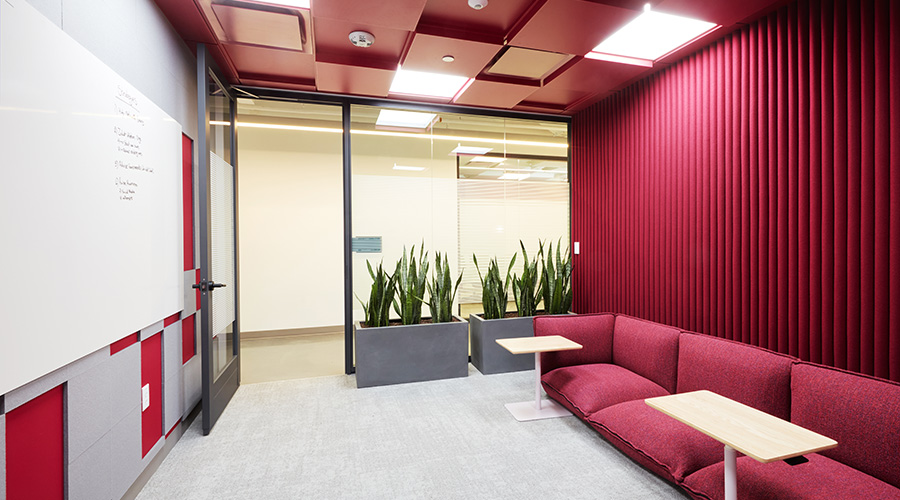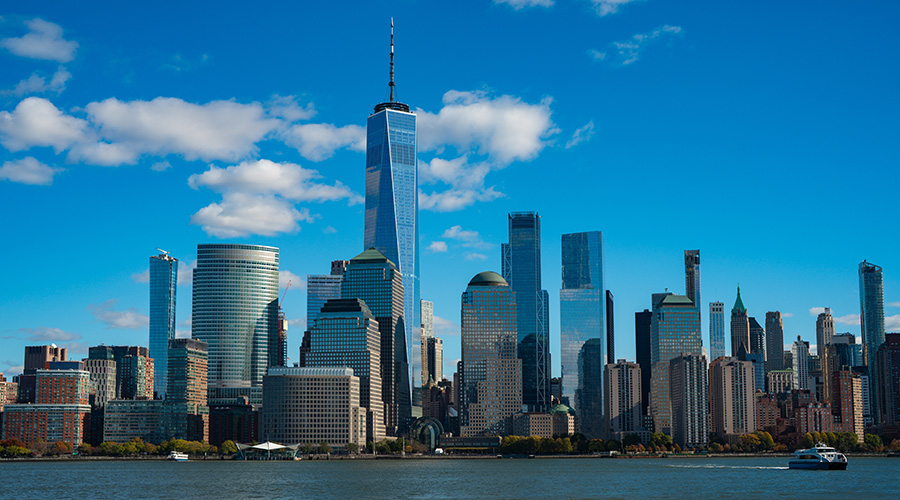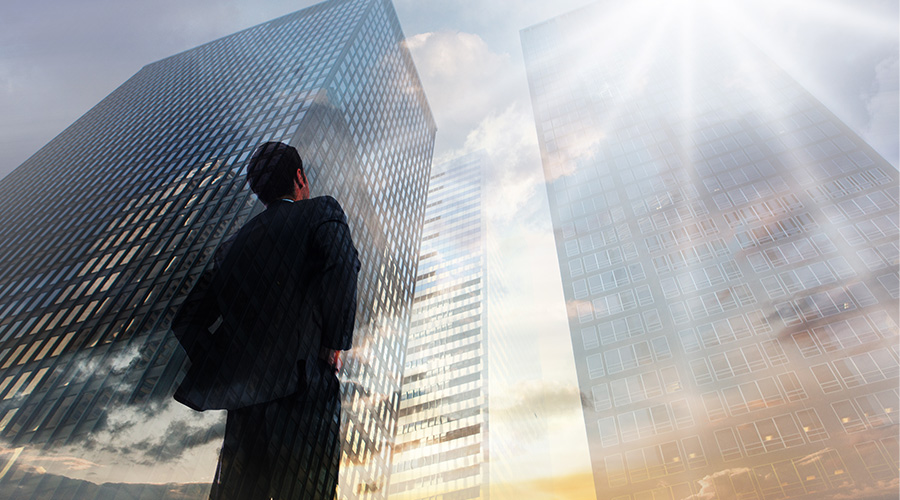Designing Offices for Hybrid Work
As working conditions continue evolving, it could take five years for trends to settle
By Doug Carroll, Contributing Writer
Who’s in the office? When? And for what purpose?
If it seems like hybrid work — time split between the office and remote work — presents more questions than answers for facility managers and building owners, that’s because it does. After all, the COVID-19 pandemic quickly turned many bustling workplaces into quiet retreats. That’s assuming anyone was there at all.
For many businesses, hybrid work emerged as the pandemic receded. Boston-based architectural firm Dyer Brown & Associates, whose motto is “culture drives design,” has embraced the challenges introduced by the new environment.
“We’ve seen wide divergence on approaches to hybrid work,” says architect Ashley Dunn, Dyer Brown’s principal and director of workplace. “These can depend on geography, demographics, the talent pool and the type of work.
“We define hybrid as working part time in an office and part time elsewhere.”
Some surveys have shown that more than 90 percent of the workforce favors hybrid work, creating what Dunn called “a unique opportunity … to think beyond the current moment to a workplace of the future.”
In the reimagined office, it’s not enough to design a space based on headcount alone. Dyer Brown touts a number of approaches, including one client’s consolidation of six regional offices into a single, 115,000-square-foot hub in Washington, D.C.
That particular solution involved:
- Developing studies and test layouts for multiple “neighborhood” seat-mix ratios and workspace functions.
- Increasing both the seat count and space type variety while shifting the individual-to-collaborative seat mix from a 50-50 percent ratio to 30-70 percent.
- Allowing teams to have input based on their needs, featuring a mix of agile and traditional offices, adjustable-height workstations and open/enclosed collaborative settings.
- Providing amenities such as lounge seating, breakout spaces, pantries and cafés to anchor circulation paths and promote interaction across and between floors.
“Consider the workspace as a hub for social interactions, experience and brand/culture, rather than just a place with a desk,” Dunn says. “On top of that, flexibility and resiliency are key as the world around us continues to change — so the workspace should flex and change to meet evolving needs, too.”
The smartest employers will tap into the knowledge of their people in human resources, who often have a handle on how policies and procedures can affect available space. They also have a big-picture view of staffing — where the shortages and surpluses are — and can survey staff regarding preferences.
Dunn says she expects at least five more years of experimentation before hybrid trends start to solidify.
“We have to find the intersection of what will work and also give employees the flexibility they’ve come to expect,” she says. “I’m a big advocate for thinking about why your people are in the office. We’re coaching our clients on this. What is the end goal? What do you expect when people come into the office?”
Smaller, focused rooms — similar to the study rooms in libraries — that are adjacent to larger rooms may become common in newer designs. Totally open offices, with rows and rows of same-size cubicles, probably won’t.
“You need ‘zones’ where there are a variety of types of spaces,” Dunn says. “People want a desk. But they also want to go somewhere and shut the door or go somewhere (in the office) to have lunch with three or four colleagues.
“Part of building a culture is these little interactions. That’s true in the neighborhood where you live, and it’s true in the office as well.”
Doug Carroll is a freelance writer based in Chandler, Arizona.
Related Topics:












